Irina Gribanova
Translation of Algorithmic Descriptions of Discrete Functions to SAT with Applications to Cryptanalysis Problems
May 17, 2018

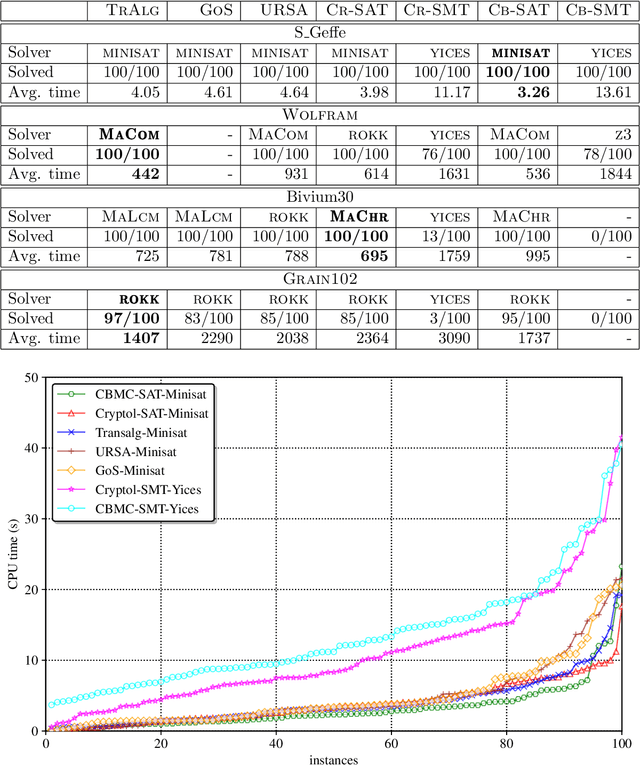
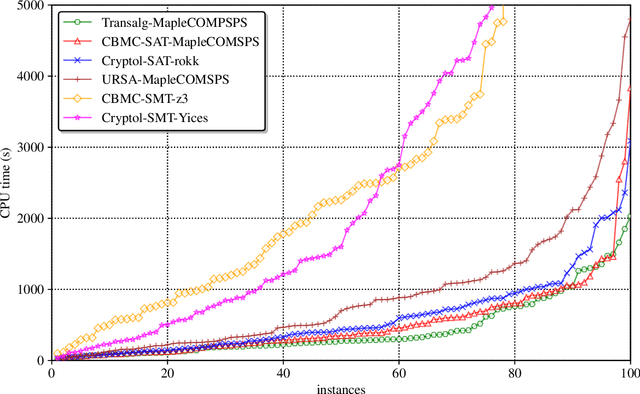
Abstract:In the present paper we describe the technology for translating algorithmic descriptions of discrete functions to SAT. The proposed methods and algorithms of translation are aimed at application to the problems of SAT-based cryptanalysis. In the theoretical part of the paper we justify the main principles of general reduction to SAT for discrete functions from a class containing the majority of functions employed in cryptography. Based on these principles we describe the Transalg software system, developed with SAT-based cryptanalysis specifics in mind. We show the results of applications of Transalg to construction of a number of attacks on various cryptographic functions. Some of the corresponding attacks are state of the art. In the paper we also present the vast experimental data, obtained using the SAT-solvers that took first places at the SAT-competitions in the recent several years.
Encoding Cryptographic Functions to SAT Using Transalg System
Jul 04, 2016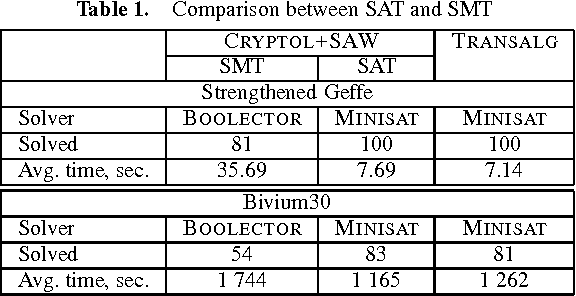
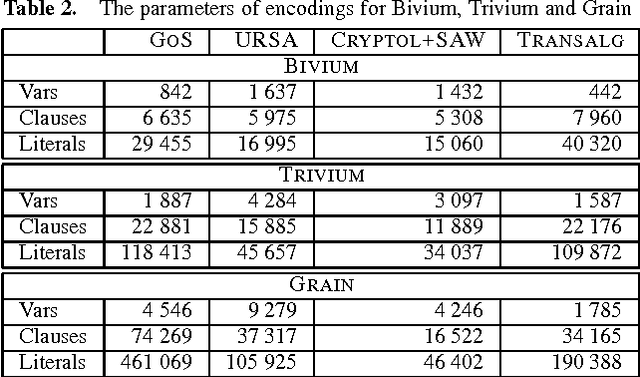
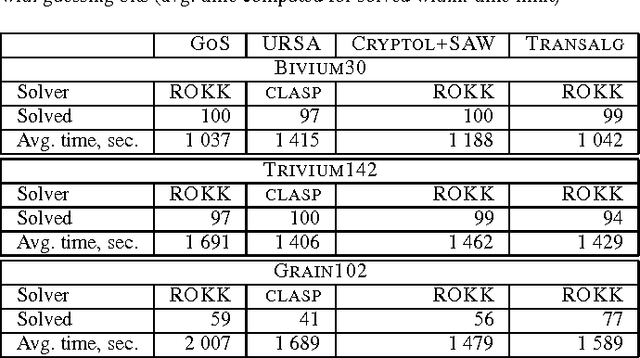

Abstract:In this paper we propose the technology for constructing propositional encodings of discrete functions. It is aimed at solving inversion problems of considered functions using state-of-the-art SAT solvers. We implemented this technology in the form of the software system called Transalg, and used it to construct SAT encodings for a number of cryptanalysis problems. By applying SAT solvers to these encodings we managed to invert several cryptographic functions. In particular, we used the SAT encodings produced by Transalg to construct the family of two-block MD5 collisions in which the first 10 bytes are zeros. Also we used Transalg encoding for the widely known A5/1 keystream generator to solve several dozen of its cryptanalysis instances in a distributed computing environment. In the paper we compare in detail the functionality of Transalg with that of similar software systems.
 Add to Chrome
Add to Chrome Add to Firefox
Add to Firefox Add to Edge
Add to Edge